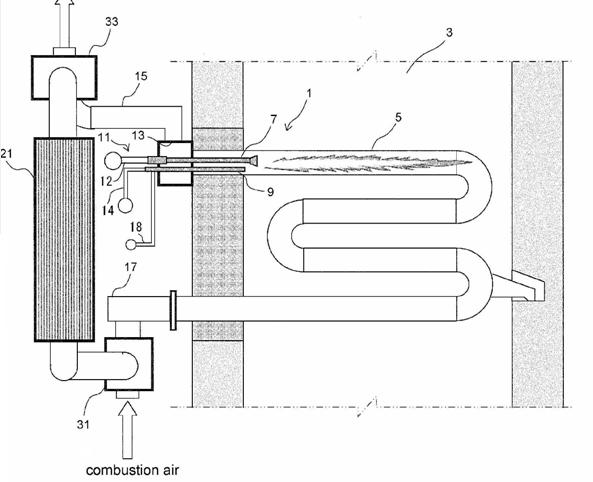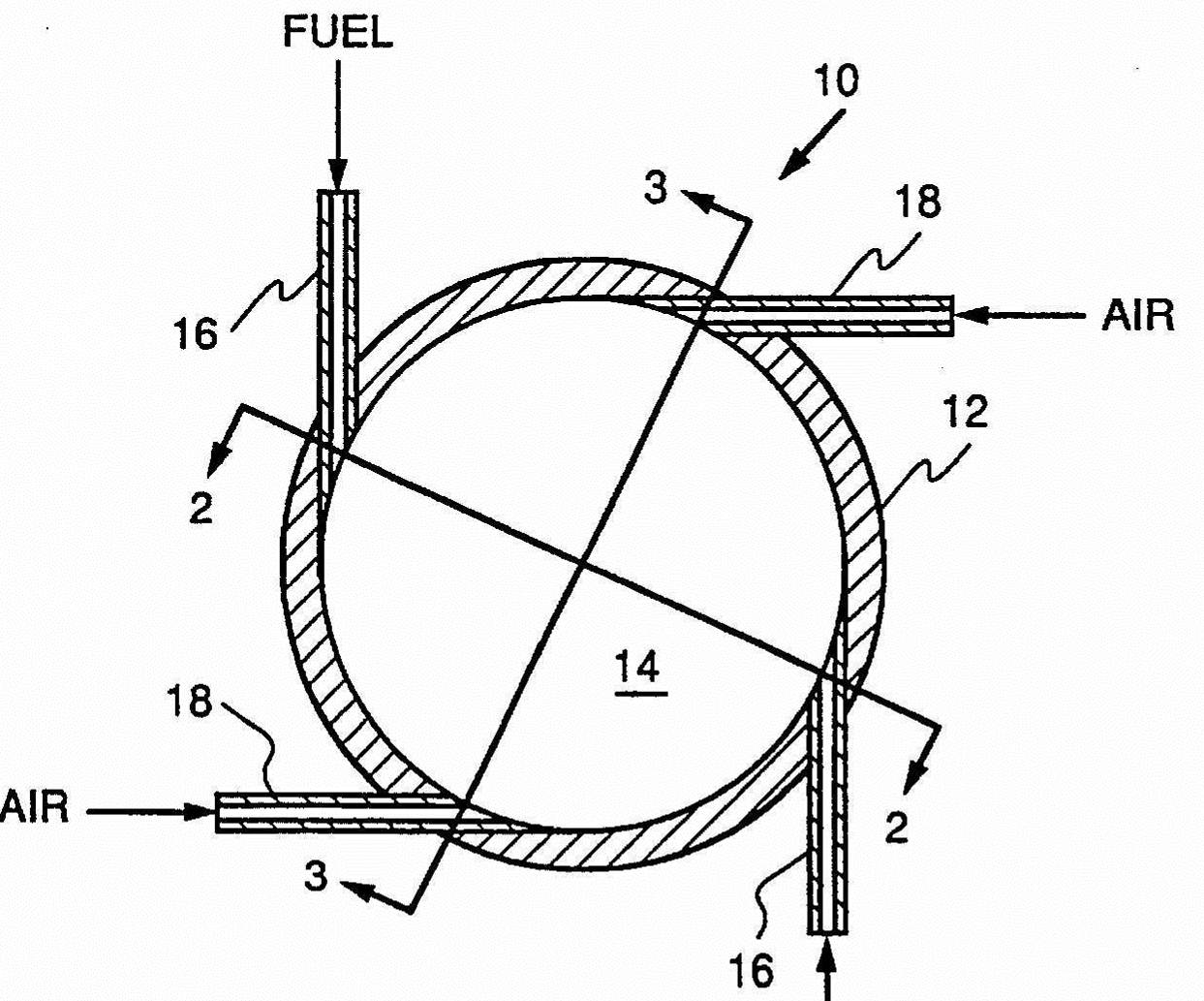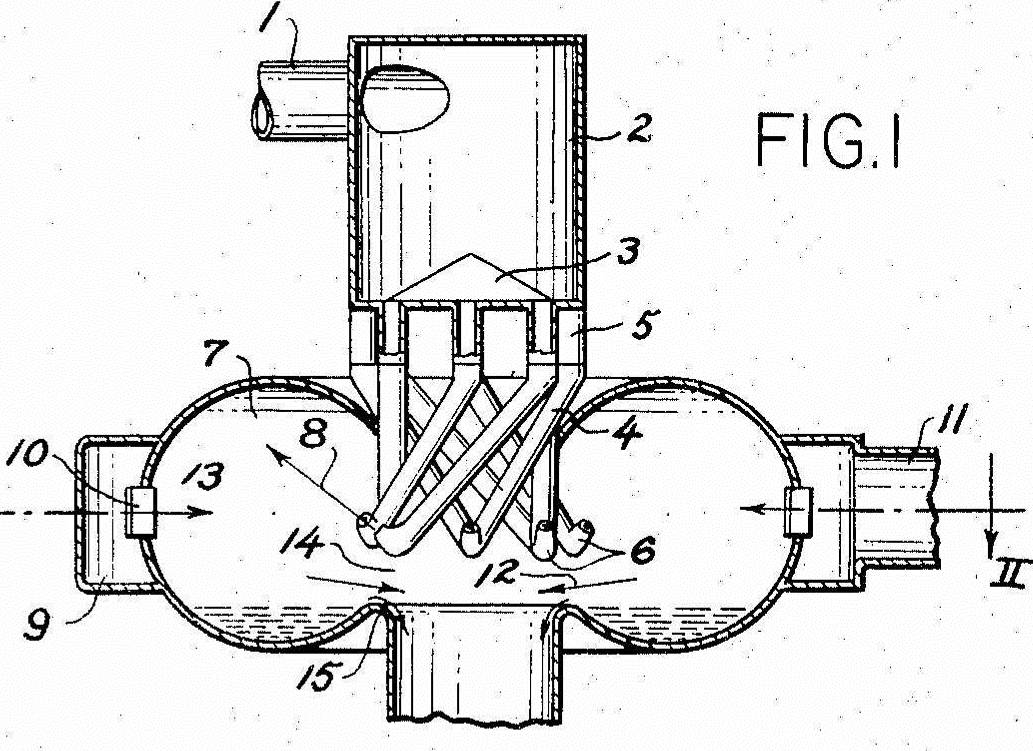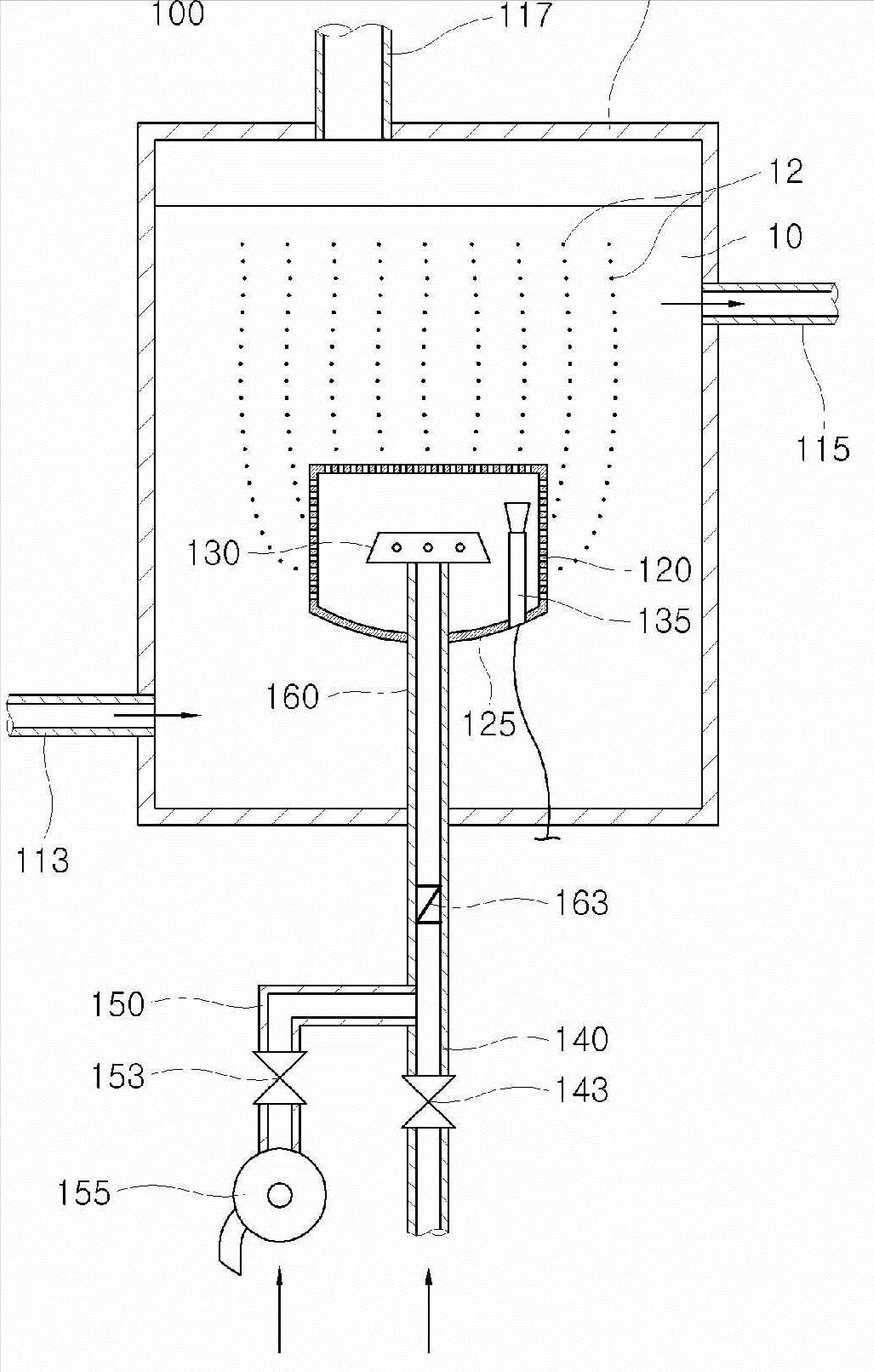CPC Definition - Subclass F23C
This place covers:
General function-oriented aspects of methods and apparatus for combustion of
- Fluid fuels or solid fuels suspended in a carrier gas, alone or in combination with other fluid or non-fluid fuels
- Fluid fuels or solid fuels suspended in a carrier gas, alternately with other fuels
- Pulverised solid fuel suspended in a stream of air or other gas, e.g. combustion in fluidised beds or combustion of pulverised fuel using burners where the fuel is transported into the combustion chamber by an air stream
- Solid fuel suspended in a liquid, e.g. combustion of coal-water slurry
Relationship between this subclass and application subclasses of class F23
F23G, (Cremation furnaces; Consuming waste by combustion) is to be seen as an application place in relation to the function-oriented aspects of combustion covered by this subclass. In case of doubt, classification should be made in both subclasses, or in both F23G and detail subclasses of class F23.
Classification is made in F23C if the methods or apparatus:
- are of general interest for combustion of different types of fluid fuels or solid fuel suspended in a carrier gas, for example not specially adapted for a particular fuel, or
- specially adapted for fluid fuels or solid fuel suspended in a carrier gas other than those provided for in F23G, (see the list below), for example "normal" commercial fluid fuel, such as oil, natural gas or pulverised coal.
Classification is made in F23G if the methods or apparatus are specially adapted for combustion of the following types of substances:
- Fuels, e.g. waste, presenting particular fuel-related environmental problems requiring specially adapted methods or apparatus for combustion, for example toxic, explosive, radioactive or corrosive fuels
- Waste having a special physical form requiring specially adapted methods or apparatus for combustion, for example packaged waste
- Low-grade fuels presenting particular problems of combustion requiring specially adapted methods or apparatus for combustion, for example contaminated oil or gas of low heating value.
F23R, (Generating combustion products of high pressure or high velocity), is also to be seen as an application place in relationship to this subclass.
Classification is made in F23R if the apparatus or method is specially adapted for generating combustion products of high pressure or high velocity.
Relationship between this subclass and other application places
Combustion is often used for the purpose of heating or performing different operations. Apparatus for combustion can be self-contained devices, but are often part of, or used in connection with, heat-consuming apparatus, such as heating boilers. This subclass is therefore related to several places providing for uses of heat. In many of these fields the combustion apparatus can be considered a detail of a bigger entity. A non-exhaustive list of examples of such classes or subclasses will be found under the heading "Informative references" below.
Combinations of combustion apparatus with other apparatus, where the combustion apparatus can be seen as a detail of the complete apparatus, e.g. a steam boiler, are classified as a whole, in the place for the other apparatus. Additional classification is made in this subclass only if features relating to the combustion apparatus per se are of interest apart from its application.
Relationship between this subclass and detail subclasses of class F23
Subclass F23D covers burners per se, as defined in the section "Glossary" below. Classification is made in F23C if the subject matter to be classified, in addition to a burner, includes further features that are of interest, such as a particular form of combustion chamber or a particular arrangement of burners in a combustion chamber. Air supply means that are arranged in immediate connection with the fuel-feeding conduit of a burner, for example concentric with it, should be considered to be part of the burner. Means for feeding air otherwise than in immediate connection with the fuel-feeding conduit of a burner are classified in F23C or F23L, for example arrangements for feeding secondary air at points distant from a burner.
Subclasses F23J - F23Q are to be seen as detail places in relation to this subclass. Classification is made in this subclass if the apparatus as a whole is of interest, or if a detail is of use only for a particular type of combustion apparatus and not specifically provided for in any of subclasses F23J - F23Q. If a detail of a combustion apparatus is of interest, classification is made in the relevant subclass providing for such matter.
This place does not cover:
Burners |
Examples of places where the subject matter of this place is covered when specially adapted, used for a particular purpose, or incorporated in a larger system:
Baking ovens | |
Cooking apparatus | |
Gas turbine plants | |
Lighting | |
Generating steam | |
Combustion specially adapted for waste or low grade fuel | |
Generating combustion products of high temperature or high pressure | |
Domestic stoves or ranges for cooking or local heating | |
Domestic heating systems or space-heating systems | |
Heating of fluids, e.g. air or water | |
Drying | |
Heat treatment of material or articles |
Attention is drawn to the following places, which may be of interest for search:
Chemical or biological purification of waste gases | |
Chemical or physical processes or apparatus in general | |
Combustion using solid fuel only | |
Removal or treatment of combustion products, e.g. flue gases or combustion residues, e.g. ash | |
Feeding fuel | |
Supplying air or other non-combustible liquids or gases, e.g. water or steam | |
Constructional details of combustion chambers, not otherwise provided for | |
Regulating or controlling combustion | |
Ignition | |
Heat-producing reactions of chemical substances, other than combustion (e.g. of hydrogen peroxide and methane, or iron oxide and aluminium) |
In this subclass methods are classified in the groups that cover the apparatus used.
When classifying in this subclass, add codes F23C 2200/00 - F23C 2206/103 and F23C 2900/10001 - F23C 2900/09002.
Indexing Codes F23C 2700/00 - F23C 2700/066 shall not be used.
In this place, the following terms or expressions are used with the meaning indicated:
Air | a mixture of gases containing free oxygen and able to promote or support combustion |
Primary air | air supplied to the burning fuel, e.g. together with the fuel in order to liberate combustible gases |
Secondary air | air supplied to the combustible gases liberated by the primary air in order to complete their combustion. The expression "secondary air" covers "tertiary air" etc. |
Burner | a device by which fluid fuel or solid fuel suspended in air is passed to a combustion space where it burns to produce a self-supporting flame. A burner includes means for feeding air that are arranged in immediate connection with a fuel feeding conduit, for example concentric with it. |
Combustion | a heat-producing sequence of chemical reactions between a burnable substance and molecular oxygen, e.g. in air in most cases generating light in the form of flames or a glow |
Combustion chamber | a chamber in which fuel is burned to establish a self-supporting fire or flame and which surrounds that fire or flame |
Combustion zone | the part of an apparatus where the reaction takes place between air and fuel |
In patent documents, the following abbreviations are often used:
CFB | Circulating fluidised bed |
CWS | Coal-water slurry |
EHC | Electrically-heated catalyst |
FBN | Fuel bound nitrogen |
HC | Hydrocarbons |
NOx | Nitrous oxides |
PFBC | Pressurised fluidised bed combustion |
SOx | Sulfur oxides |
UHC | Unburned hydrocarbons |
In patent documents, the following words/expressions are often used with the meaning indicated:
"boiler" | "combustion apparatus", even when heating of water or other liquids is of no interest. |
"burner" | "combustion apparatus", and not in the restricted meaning defined above. |
This place does not cover:
Attention is drawn to the following places, which may be of interest for search:
Waste incinerators having supplementary heating by gaseous or liquid fuel |
This place covers:
Combustion apparatus wherein the shape or the location of the combustion chamber is of particular relevance, e.g. radiant tubes, cyclonic combustors and submerged combustors
Illustrative example: EP2299175, US547981, US2900930, WO2010/090453




Attention is drawn to the following places, which may be of interest for search:
Cyclonic combustion for waste |
This place does not cover:
Combustion apparatus wherein the chamber having an elongated tubular form, e.g. for a radiant tube |
Attention is drawn to the following places, which may be of interest for search:
Arrangements or dispositions of combustion apparatus in steam boilers | |
Arrangement or mounting of burners in fluid heaters |
This place does not cover:
Consuming smoke or fumes in separate combustion apparatus |
Attention is drawn to the following places, which may be of interest for search:
Heat supply in steam boilers by installation of two or more combustion apparatus | |
Waste incinerators with secondary combustion in a separate combustion chamber | |
Water heaters having plural combustion chambers |
When classifying in this group, add codes F23C 2201/10 - F23C 2201/401.
This place covers:
Aspects of the air supply related to the introduction of the combustion air into the combustion chamber in proximity of the burner, e.g. passages, swirling vanes, flow controlling means, limited to apparatus of methods for fluid fuels only.
This place does not cover:
Inlets for fluidisation air | |
Baffles or shields with air supply passages |
Multiple classification should be applied when:
the subject matter to be classified deals with air supply means which are part of a burner and no relevant subgroup is available in F23D, e.g. arrangements of swirling vanes in a premix gas burner have to be classified in F23C 7/004 and F23D 14/02;
the subject matter to be classified, in addition to a burner, includes further features of the air supply means that are of interest, for example a particular form of a swirling vane, even if a relevant subgroup is available in F23D, e.g. an arrangement of adjustable swirling vanes in a non-premix gas burner having separate air and gas feed conduits have to be classified in F23C 7/006 and F23D 14/24
This place does not cover:
Fluidised beds with means specially adapted for achieving or promoting a circulating movement of particles within the bed or for a recirculation of particles entrained from the bed | |
Combined with devices for partial reintroduction of material into the bed, e.g. after separation of agglomerated parts | |
Fluidised bed incinerators with means specially adapted for achieving or promoting a circulating movement of particles within the bed or for a recirculation of particles entrained from the bed |
Attention is drawn to the following places, which may be of interest for search:
Combustion apparatus using solid fuel with means for returning combustion products or flue gases |
When classifying in this group, add codes F23C 2202/10 - F23C 2202/50.
Attention is drawn to the following places, which may be of interest for search:
Fluidised bed apparatus comprising two or more beds | |
Fluidised bed apparatus comprising a rotating bed | |
Fluidised bed apparatus comprising a bed of catalytic particles | |
Fluidised bed apparatus comprising means specially adapted for achieving or promoting a circulating movement of particles within the bed or for a recirculation of particles entrained from the bed | |
Fluidised bed apparatus specially adapted for operation at super-atmospheric pressures, e.g. by the arrangement of the combustion chamber and its auxiliary systems inside a pressure vessel | |
Details and/or accessories for fluidised bed apparatus, e.g. inlets for fluidizing air, fuel feeders, controlling devices | |
Devices for removal of material from the bed combined with devices for partial reintroduction of material into the bed, e.g. after separation of agglomerated parts | |
Chemical or physical processes according to "fluidised-bed" technique in general | |
Waste incinerators having a fluidised bed | |
Fluidised bed furnaces or other similar apparatus for heat treatment of materials or articles |
When classifying in this group, add codes F23C 2206/10 - F23C 2206/103.
This place does not cover:
Combustion in a fluidised bed of catalytic particles | |
Radiant gas burners using catalysis for flameless combustion |
Attention is drawn to the following places, which may be of interest for search:
Attention is drawn to the following places, which may be of interest for search:
Catalysts per se |
Attention is drawn to the following places, which may be of interest for search:
Starting devices | |
Intermittent or explosive combustion chambers for generating combustion products of high pressure or high velocity |
When classifying in this group, add codes F23C 2205/10 - F23C 2205/20 if appropriate.
Attention is drawn to the following places, which may be of interest for search:
Applying electric means or magnetism to combustion in combustion engines | |
Using sound or vibrations in combustion engines |
Attention is drawn to the following places, which may be of interest for search:
Applying electric means or magnetism to combustion in combustion engines |
Attention is drawn to the following places, which may be of interest for search:
Using sound or vibrations in combustion engines | |
Liquid fuel burners using ultrasonic means for spraying the fuel |
This place does not cover:
Fluidised bed apparatus |
This place does not cover:
Apparatus in which combustion takes place in the presence of catalytic material | |
Radiant gas burners with combustion on or in a porous body | |
Radiant gas burner with a catalyst flameless combustion |
When classifying in this subgroup, add codes F23C 2203/10 - F23C 2203/30 if appropriate.
Attention is drawn to the following places, which may be of interest for search:
Continuous combustion chambers comprising an annular flame tube within an annular casing |